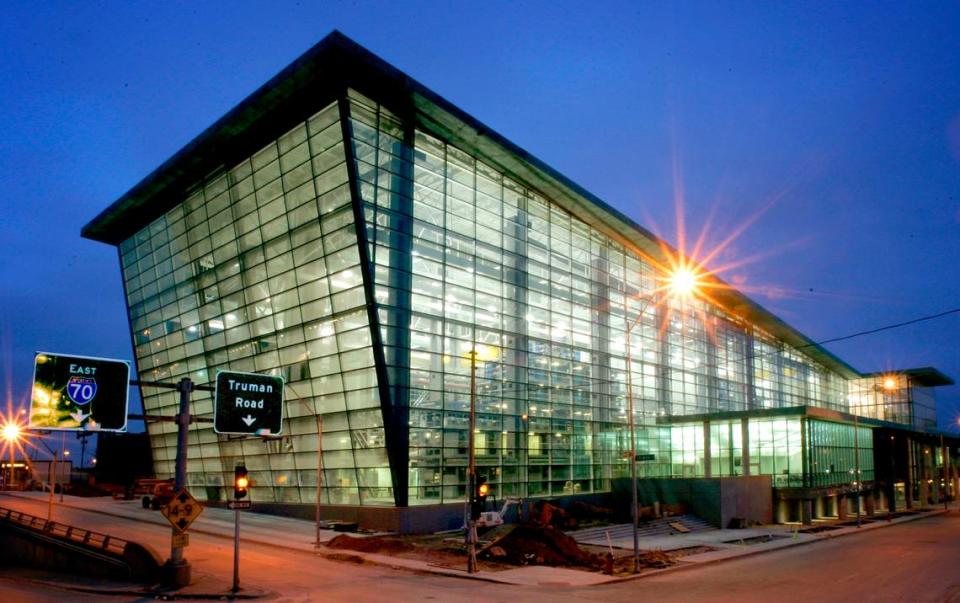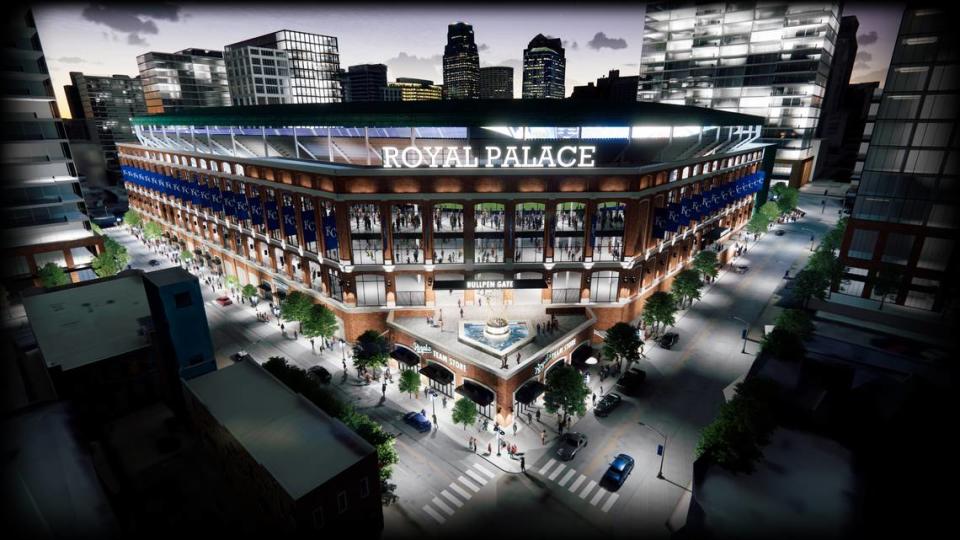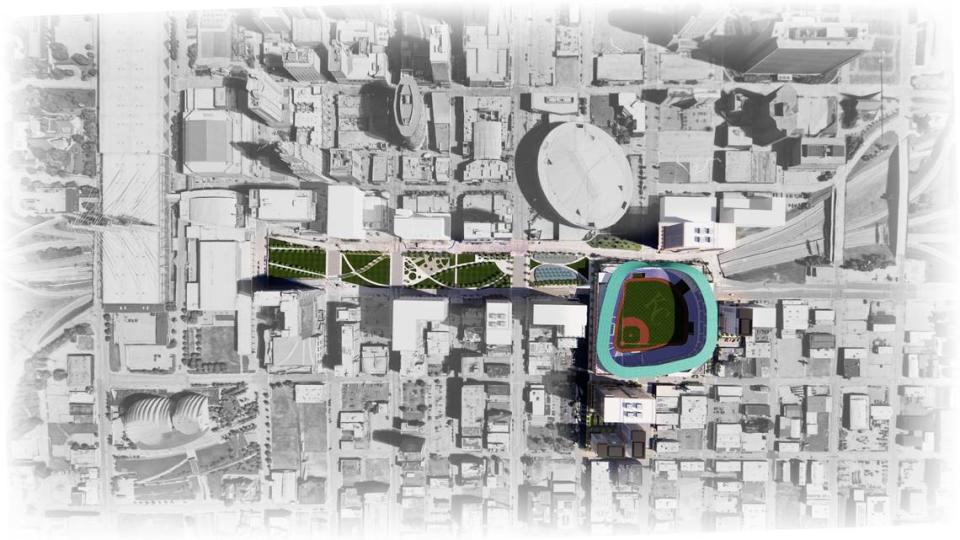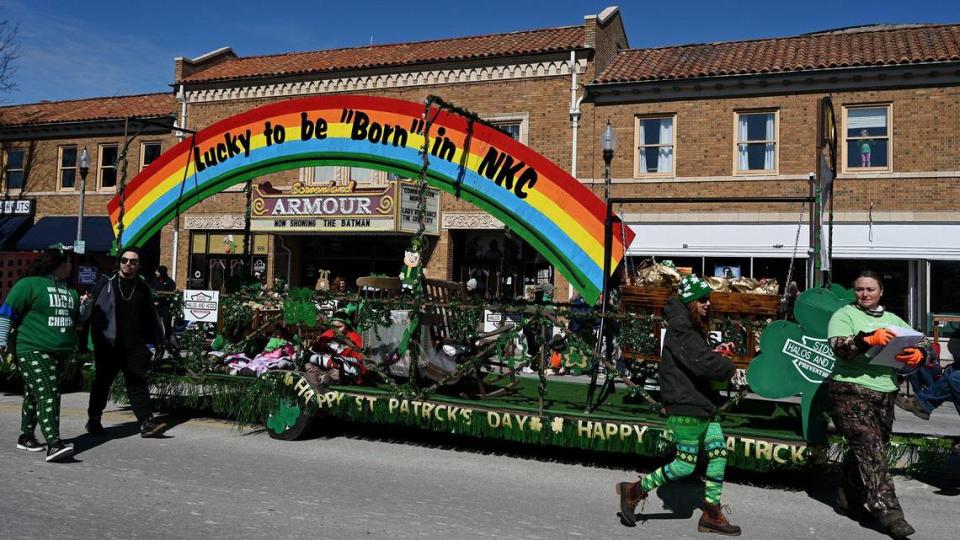As Royals near decision, could these two sites be in play for downtown stadium?
On Thursday afternoon, the Royals will begin another season inside Kauffman Stadium, donning Opening Day uniforms that offer a nod to the first occupants of the venue. They came in 1973, embracing a stadium that has remained home for a half-century.
But probably not for much longer.
The Royals publicized in November their intentions to move to downtown Kansas City, though four months later, several questions remain. Most notable is the first domino: Where exactly downtown?
City and county officials continue to portray the East Village as the team’s highly-preferred option in private conversations with The Star, and it doesn’t require an elaborate investigation to secure the clues — the developer there began demolishing buildings in January, intensifying speculation that East Village will ultimately be selected from the group of 14 sites the team said it originally considered.
“We believe that the East Village is where they are focused on and have been focused on,” said a Jackson County official who asked not to be identified. “That being said, we have no agreement on that site.”
Even so, that hasn’t prevented others from continuing to make a push. Or at least a pitch. Backers of at least two known sites are trying to steer the Royals toward alternatives.
Those include the former Kansas City Star printing pavilion at 1601 McGee St. and a property north of the Missouri River in Clay County.
The Star site, the thinking goes, would place the new stadium in the middle of the action — much closer to existing draws like the Power & Light district than the sleepy East Village neighborhood. That area is bordered by downtown’s government district to the west and interstates 70 and 35 to the east. Eighth Street is to the north and 12th Street is on the south.
North of the river, boosters think a new stadium would feed into the overall growth that in recent years has defined Clay County — and provide a different baseball backdrop than is possible in the heart of downtown.

Over the course of three public meetings, the Royals characterized the stadium as a $2 billion construction project — $1 billion for the new stadium and $1 billion for a surrounding ballpark district to include offices, restaurants and housing. Royals Chairman and CEO John Sherman has said private capital would fund a “bulk” of the stadium cost and the entirety of the ballpark village, and he later targeted 2027 or 2028 as potential opening dates.
Absent, though: A precise location.
The team says it has narrowed the list to four or five finalists.
Asked if either of these sites were among that group, the Royals said in a statement: “We continue to actively evaluate multiple locations in and around downtown.”
At spring training last month, Sherman indicated to reporters that a final decision will arrive sooner rather than later. Ultimately, though, it’s not the organization’s decision alone whether to build a new stadium but also that of the local taxpayers, who on Friday were polled by the team for the second time to gauge their interest. The project will likely seek hundreds of millions in taxpayer support and therefore a public vote.
The earliest voters could weigh the issue is Aug. 8, a date to which team leaders have alluded but one that would require quick action. May 30 is the state’s election deadline for getting something on the ballot for that election.
What location will those voters consider? Some are still lobbying to sway that answer — even as they know they’re fighting from behind.
“You hear people say it’s over — but it’s not,” said David Slater, executive director of the Clay County Economic Development Council. “It doesn’t matter how big of a shot we have. We’re on the board.”
THE STAR SITE
The green glass building, formerly home to The Star, sits on McGee Street, visible from Interstate 670 and sandwiched between the T-Mobile Center and the Crossroads District.
The attraction, quite clearly, is the location.
The property is unrecognizable in renderings of the stadium provided to The Star. A preliminary concept created by Mammoth Sports Construction shows an open-air brick facade around the new stadium. An awning covered in recycled green copper wraps around the imagined ballpark.
This exact look probably will never come to life — the Royals hold the keys on the stadium design — but the Privitera family, owners of the building, hope their location is selected, even if their design is not.

While the stadium is one of many potential reuses for the site, the Priviteras say, they certainly have one highly-preferred option.
“Our first desire is to see if the Royals could be there,” said Rosana Privitera Biondo, president of Mark One Electric.
The Star vacated the iconic green glass structure in 2021 after its parent company McClatchy sought Chapter 11 bankruptcy protections, which allowed the business to renegotiate leases.
Since then, the Priviteras have worked to market the building and the former printing presses, which remain in the northern portion of the glass structure, and The Star has moved its offices into Crown Center.
Tony Privitera directly pitched the notion of using the site for a Royals stadium to Brooks Sherman, a Royals senior vice president who is working on the new stadium venture, while at spring training in Arizona last week, he said. And Rosana Privitera Biondo said she recently emailed directly with John Sherman, the team’s chairman and CEO.
“The words that we heard from them were, ‘Wow that looks fabulous; I’m so excited to see it,’” she said, generalizing the response.
The hiccup, and it’s not an inexpensive one: The plan would require acquisition of other properties directly east or west of the two-block long building. The East Village site clears the hurdle as a single developer, and the city owns most of the parcels there.
But those associated with The Star site believe it has a primary marketing tool that East Village does not.
Location, location, location.
The McGee Street property would naturally feed into the bars and restaurants at the Power and Light District’s KC Live! rather than requiring the construction of a new ballpark village adjacent to a new stadium.
Robb Heineman, a minority owner with Sporting Kansas City, has joined the Privitera family in the efforts to market the setting as a potential home for the Royals stadium, though Sporting KC has no affiliation with this project. Heineman believes the Star building would boost the Power &Light District rather than “cannibalizing” it with a competing entertainment district a few blocks away.
The city financially backed the cost to build out the Power & Light District, but tax revenues pledged to pay off the debt have consistently fallen short. So far, Kansas City has spent more than $160 million subsidizing principal and interest payments for the entertainment district over the last 15 years, according to the Kansas City Business Journal.
A stadium in that area would supplement the existing entertainment district and also complement ongoing plans for a new $200 million park over Interstate 670. City officials in February announced they had raised about $45 million in pledged donations to go toward the 4.6-acre park.

In the renderings provided to The Star, that park turns a McGee Street stadium into a convenient trek to and from the T-Mobile Center or Power and Light.
“All of a sudden, our downtown becomes a walkable city and vibrant,” Privitera Biondo said.
The Star building, though, would likely rack up a much larger bill on engineering and construction. Aside from dismantling or repurposing the $200 million building, that site would require spanning the interstate. By comparison, the East Village site, mostly controlled by VanTrust Real Estate and the city, would offer a blank slate of parcels to develop.
“While it won’t be an inexpensive challenge, I believe it’s a challenge that can be overcome,” Heineman said. “I think there’s a lot of willing sellers or even partners around their land. I think it’s something that can be overcome.”
The Clay County site
The Royals currently lease Kauffman Stadium from Jackson County under an agreement that runs through the end of the 2030 season.
That would certainly complicate any move to Clay County, particularly if the team looks to move out before its current lease expires. The current lease requires the team to play most home games at the K through its duration.
Even rhetoric from John Sherman, the club’s principal owner, has often pointed to a future site within Jackson County.
“First, we would not ask Jackson County citizens to contribute any more tax dollars than you already do today,” Sherman wrote in a November letter to the public about the project. “Second, we want to take these steps together, with your input and engagement, as a community.”
Jackson County taxpayers are currently paying a three-eights-of-a-cent sales tax as part of a 2006 ballot initiative to fund renovations of both Kauffman and Arrowhead stadiums.
In terms of distance, North Kansas City sits much closer to the central city than the current sports complex. But the town of about 4,500 people lacks the kind of infrastructure found south of the river.
Downtown Kansas City, for example, is home to more than 40,000 parking spaces. The Kansas City Convention Center and the T-Mobile Center regularly host thousands of visitors for events.
Any move to North Kansas City would likely require public support from residents in all parts of Clay County, including Kearney, Liberty and Excelsior Springs.
Clay County officials believe that, with more than 255,000 residents, the county could enact a half-cent sales tax to help finance the project. That population is far short of Jackson County’s more than 716,000 people.
In late February, Clay County Presiding Commissioner Jerry Nolte told local leaders at the Mid-America Regional Council’s Board meeting that the county was in talks with the Royals. Officials are pointing to the site of the former AMF bowling alley in North Kansas City, just south of Armour Road, as a potential home for the new stadium.

Nolte told The Star that Clay County is centrally located, touts easy transportation access and a strong economic base.
“We’re one of the fastest growing counties in the area and in the state,” he said.
He acknowledged some of the challenges in a place like North Kansas City, but he said the Royals would have the in-house expertise to figure out transportation, infrastructure and parking.
“We’re going to have assets that put us in front of other competitors, and they’re going to have assets that, quite frankly, are putting us at a little bit of disadvantage,” he said. “But it’s just a matter of making sure that we are in the mix.”
In a weekly newsletter this month, the Clay County Economic Development Council wrote about its work with officials from North Kansas City and the state. While talks were characterized as preliminary, the council said it had discussed potential improvements to the 16th Avenue exit off of Interstate 35 with the Missouri Department of Transportation.
“While everything is still very preliminary, including the financing, we are allowed to dream,” the newsletter read. “...We may not win but we will give this chance of a lifetime our best efforts.”
Slater, who leads the organization, said the population and economic growth of Clay County make it desirable for all sorts of businesses, not just the Royals. He noted that most of Kansas City’s residential building permits are issued north of the river. And North Kansas City, which boasts breweries, local restaurants and shops, is among the most popular parts of the Northland.
“We’re just trying to set the table,” Slater said, “so if the Royals say we’re interested and here’s what we want, we have answers for them.”
But they, like others, await the answers from the Royals.
“I’m hopeful that we’re not too far away from being able to be more specific there,” John Sherman told reporters at the team’s spring training complex in Arizona. “We’re not hiding anything; it’s really just good business, not trying to start a land rush somewhere around town for the wrong reason.”

 money
money 